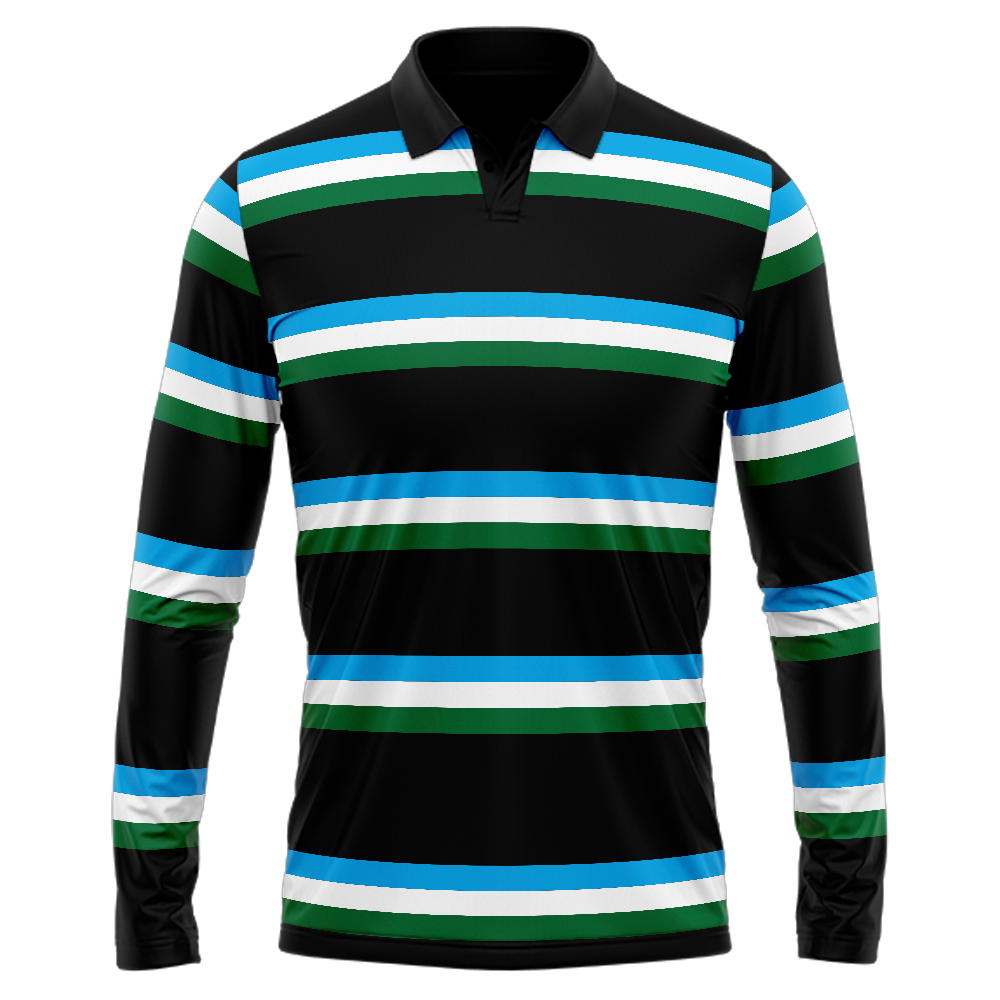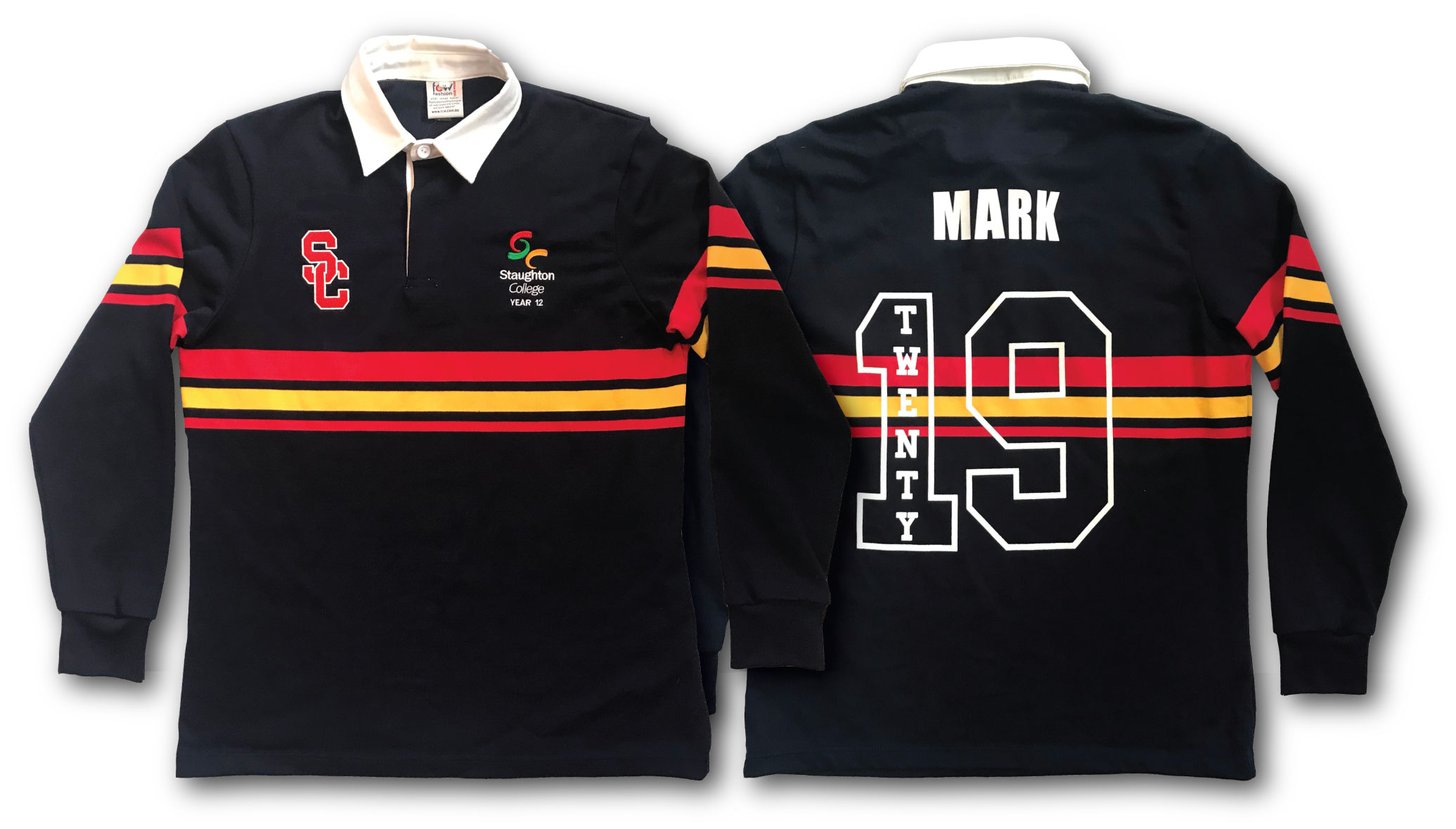Embark on a captivating journey into the world of rugby jumpers, where tradition, innovation, and cultural significance intertwine. These iconic garments, steeped in the rich history of the sport, have evolved into modern masterpieces that embody the spirit of the game.
From their humble origins to their contemporary iterations, rugby jumpers have played a pivotal role in shaping the identity of teams and fostering a sense of camaraderie among players. Join us as we explore the fascinating story behind these timeless garments, unraveling their cultural significance and showcasing the latest innovations that continue to redefine the rugby jumper.
Rugby Jumper Definition
A rugby jumper, also known as a rugby jersey, is a specialized garment designed specifically for the sport of rugby union and rugby league. Traditionally, rugby jumpers are characterized by their distinctive design, which includes:
- Long sleeves with ribbed cuffs
- A round or V-neck collar
- A horizontal stripe pattern across the chest
The primary purpose of a rugby jumper is to provide players with both comfort and protection during the physical demands of the game. The thick, durable fabric helps shield players from abrasions and minor impacts, while the breathable material allows for effective moisture wicking, keeping players cool and dry even during intense matches.
Materials Used in Rugby Jumpers
Rugby jumpers are typically made from a blend of synthetic and natural fibers, each offering unique properties that enhance the performance and durability of the garment:
- Polyester:A synthetic fiber known for its strength, moisture-wicking capabilities, and resistance to fading.
- Cotton:A natural fiber that provides breathability, comfort, and absorbs moisture.
- Spandex:A synthetic fiber that adds elasticity and flexibility, allowing for a snug fit and freedom of movement.
Historical Evolution of Rugby Jumpers
Rugby jumpers, a distinctive part of the rugby uniform, have undergone significant evolution since their inception. Originally, rugby players wore simple cotton jerseys with minimal embellishments. Over time, these jerseys evolved to meet the demands of the increasingly physical game.
Origins and Early Development
The earliest rugby jumpers, dating back to the mid-19th century, were made of thick wool and featured a simple crew neck and long sleeves. They were often plain in color, typically navy blue or black, with no distinguishing features. As the game became more popular, teams began to add stripes or other designs to their jerseys to differentiate themselves.
Cultural Significance of Rugby Jumpers

Rugby jumpers hold immense cultural significance within the sport, symbolizing unity, tradition, and team spirit. They serve as a visual representation of a player’s affiliation and a source of pride for both players and supporters.
Team Identity and Camaraderie
Rugby jumpers play a crucial role in fostering team identity and camaraderie. Each jumper bears the team’s unique colors, crest, and sponsorships, creating a sense of belonging and shared purpose among players. The jumpers become a symbol of the team’s history, values, and aspirations.During
matches, players wear their jumpers with pride, representing not only themselves but their team and its supporters. The jumpers become a tangible connection between players and fans, fostering a sense of unity and shared experience.Moreover, rugby jumpers are often passed down through generations, becoming cherished heirlooms that symbolize the enduring legacy of the sport and the teams that have played it.
Modern Variations and Innovations

Contemporary rugby jumpers showcase an array of innovative designs and advancements. Modern materials and technologies have transformed jumper performance, enhancing comfort, durability, and player safety.
Material Advancements
- Moisture-wicking fabrics:Synthetic materials like polyester and nylon effectively absorb and dissipate sweat, keeping players dry and comfortable.
- Antimicrobial treatments:Antimicrobial coatings inhibit bacterial growth, reducing odor and enhancing hygiene.
- UV protection:Fabrics with UV-resistant properties safeguard players from harmful sun exposure.
Design Innovations
- Improved fit and flexibility:Advanced tailoring techniques and stretchable fabrics allow for a more tailored and unrestricted fit.
- Enhanced ventilation:Strategically placed mesh panels and breathable fabrics promote airflow, regulating body temperature.
- Reinforced stitching and seams:Reinforced stitching and flatlock seams enhance durability, withstanding the rigors of physical play.
Player Safety Features
- Padding and impact absorption:Padding in key areas, such as the shoulders and chest, provides additional protection against impacts.
- Anti-abrasion fabrics:Abrasion-resistant fabrics minimize the risk of skin abrasions and injuries during tackles and scrums.
Styling and Customization: Rugby Jumper
Rugby jumpers are highly customizable garments, offering a wide range of options for styling and personalization. The versatility of jumper designs allows teams and individuals to express their unique identities and preferences.
Colors play a significant role in jumper customization. Traditional rugby jumpers often feature bold, contrasting colors that represent the team’s identity. These colors can be used in stripes, blocks, or other patterns to create a distinctive look.
Patterns are another important element of jumper design. Classic patterns include hoops, stripes, and chevrons, but modern designs often incorporate more intricate and innovative patterns. These patterns can add a touch of flair and individuality to the jumper.
Logos and emblems are commonly used to enhance the visual appeal of rugby jumpers. Team logos, sponsors’ logos, and national symbols are often prominently displayed on the chest or sleeves of the jumper. These logos not only represent the team’s affiliation but also serve as a marketing tool.
Embroidery and Appliqués
Embroidery and appliqués are popular techniques used to add detail and embellishment to rugby jumpers. Intricate embroidery designs can be used to create crests, slogans, or other decorative elements. Appliqués, which are pieces of fabric sewn onto the jumper, can be used to add texture and depth to the design.
Personalization
Rugby jumpers offer ample opportunities for personalization. Players can add their names, numbers, or nicknames to the back of the jumper. Supporters can also customize their jumpers with their favorite team’s colors and logos.
Practical Considerations
Rugby jumpers, designed for the rigors of the sport, prioritize both fit and comfort to enhance player performance. Ensuring a snug fit that doesn’t restrict movement is paramount. The jumper should fit comfortably around the chest, shoulders, and arms, allowing for a full range of motion.
Comfort is equally crucial, with soft and breathable materials that wick away sweat, keeping players dry and comfortable throughout the game.
Selecting the Right Jumper for Different Playing Conditions, Rugby jumper
Choosing the right rugby jumper for varying playing conditions is essential. For cold and wet weather, opt for jumpers made from moisture-wicking, insulating materials like merino wool or synthetic blends. These fabrics keep players warm and dry, preventing hypothermia. In contrast, for warmer weather, lightweight, breathable jumpers made from cotton or moisture-wicking synthetics are ideal.
They allow for ventilation, keeping players cool and comfortable during intense matches.
Care and Maintenance

Proper care and maintenance are crucial to prolonging the lifespan of your rugby jumper and keeping it looking its best. Here are some guidelines to follow:
Always check the care label attached to your jumper for specific washing instructions. Different materials may require different care methods.
Washing
- Use cold water and a mild detergent designed for delicate fabrics.
- Turn the jumper inside out to protect the design and embroidery.
- Avoid using fabric softeners, as they can damage the fibers.
- Do not bleach or use harsh chemicals.
Drying
- Lay the jumper flat to air dry. Avoid hanging it, as this can stretch the fabric.
- Do not tumble dry, as the heat can damage the fibers and shrink the jumper.
Storing
- Fold the jumper neatly and store it in a cool, dry place.
- Avoid storing the jumper in plastic bags, as this can trap moisture and lead to mildew.
- If possible, use a cedar block or lavender sachet to repel insects.
Final Conclusion
As we conclude our exploration of rugby jumpers, it is evident that these garments transcend their practical purpose, becoming symbols of tradition, unity, and sporting excellence. Whether on the field or off, rugby jumpers embody the indomitable spirit of the sport, inspiring players and fans alike.
As the game continues to evolve, so too will the designs and innovations of rugby jumpers, ensuring their enduring legacy in the annals of athletic wear.
FAQ Summary
What is the traditional design of a rugby jumper?
Rugby jumpers typically feature a thick, striped design, with the stripes representing the colors of the team or club.
What materials are commonly used in rugby jumpers?
Rugby jumpers are often made from durable materials such as wool, cotton, or synthetic blends, which provide warmth, breathability, and protection.
How have rugby jumpers evolved over time?
Rugby jumpers have evolved from simple, functional garments to become more stylish and innovative, with modern designs incorporating new materials and technologies.